Life changed a great deal for women during the Middle Ages, and below, we’ll take a look at what exactly happened and the roles that they were reduced to, in particular those of maidens, wives and widows.
Prior to the Norman invasion of England in 1066, many women were landowners, something which, as we’ll see, becomes very rare.[i] But another more significant occurrence took place during the Middle Ages, one which fundamentally altered the lives of women forever: the rise of the Church.
Let’s dive into the day to day life of women in medieval times.
What Was Life Like For Women During The Middle Ages?
“What is better than wisdom? Woman. And what is better than a good woman? Nothing.”
Geoffrey Chaucer
As mentioned above, before the Christian church became popular, life for many women during the Middle Ages was one of equality.
The Christian faith during medieval times had a very warped perception of women, and that’s putting it mildly. For example, Canon (church) law defined a woman as ‘a sort of infant’.[ii] It was also legal for a man to beat his wife if he considered her lazy or disobedient.[iii] These were genuine laws made by the Church. Love thy neighbour my arse.
You may be wondering what the fuck the Christian Church was playing at. A lot of people believed in the words of the Bible. It was like people today reading the Daily Mail and accepting it as gospel. So when you have stories such as Adam and Eve in which Eve is blamed for the origin of human sin, fanatics begin to get ideas. And the Church was dominated by males who chose a life of celibacy. Bitter bastards.
But women believed in the Bible too and that led to them thinking, tragically, that this was how God intended their lives to be, as a sort of punishment.[iv]

The rise of the Church reduced the majority of women to three societal statuses: Maiden, Wife, and Widow.[v] A woman’s life during each phase was very different, both in the rights they enjoyed and those they did not. Let’s delve deeper.
What Clothes Did Women Wear During The Middle Ages?
The medieval period, spanning from the 5th to the late 15th century, witnessed distinct shifts in clothing styles, materials, and the overall perception of fashion.
During the early medieval period (5th-10th century), the predominant style was characterized by loose-fitting garments, often draped or belted at the waist. Women typically wore an ankle-length tunic, secured with a girdle, atop an underdress. The fabric used ranged from linen for everyday wear to silk for the elite. Sleeves were long and wide, and head coverings like veils or wimples were common.
As the medieval era progressed, the Norman Conquest in 1066 brought influences from continental Europe, notably the introduction of the fitted gown. The transition from the loose, flowing garments to more tailored attire marked a shift toward a more structured silhouette. Women’s gowns featured tighter bodices and fuller skirts, often supported by an early version of a corset or a fitted kirtle. Sleeves evolved into various styles, including tight-fitting sleeves and oversized, hanging sleeves.
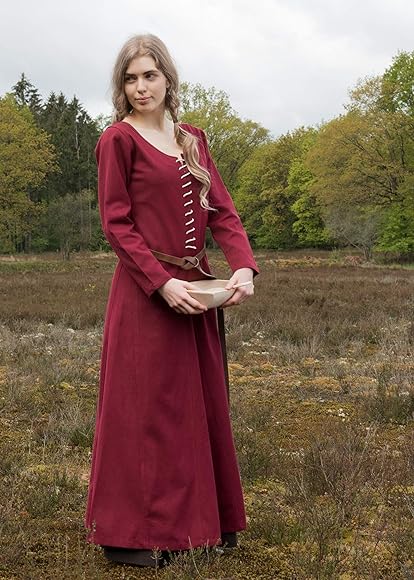
The 14th century witnessed further transformations in women’s fashion. The cotehardie, a close-fitting garment with a high waistline and elaborate details, gained popularity. Women’s dresses became more form-fitting, accentuating the natural contours of the body. The houppelande, a voluminous outer garment with wide sleeves, also became fashionable, reflecting the opulence and extravagance of the Late Middle Ages.
Headwear also played a significant role in medieval women’s attire. Veils, wimples, and various headdresses were worn to signal marital status and social standing. The hennin, a tall, cone-shaped hat, became particularly popular during the late medieval period, creating an iconic and distinctive look.
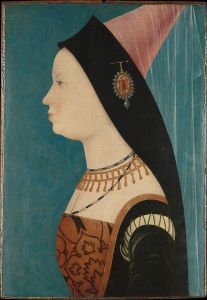
Work And Education For Medieval Women
Education for women in the Middle Ages was primarily influenced by social class and religious affiliations. The majority of women, particularly those from lower social strata, had limited access to formal education.
Education, where available, often took place within the confines of convents or monastic institutions. Nunneries became centers of learning, offering women the opportunity to study religious texts, Latin, and basic literacy skills. Education in these settings was primarily geared towards nurturing piety and devotion, aligning with the prevailing societal expectations of women’s roles as wives and mothers.
In aristocratic and royal circles, some women received a more formal education, although the curriculum was still largely focused on religious studies, etiquette, and domestic skills. Women from noble families were occasionally educated alongside their male counterparts, learning to read and write in their native languages and often in Latin.
As for women’s participation in the workforce, their roles were significantly shaped by the feudal system and economic structures of the time. Women were integral to agricultural production, particularly in rural settings, where they engaged in activities such as tending livestock, cultivating crops, and managing household affairs. In urban areas, women were involved in various trades and crafts, contributing to the economic activities of their communities. Artisan guilds sometimes allowed the participation of women, although their access to higher-status roles within these guilds was often restricted.
A notable exception to the limited professional opportunities for women was the textile industry. Women played a crucial role in textile production, engaging in spinning, weaving, and embroidery. The quality of their craftsmanship often influenced the economic prosperity of their households.
Despite the prevailing gender norms, some exceptional women managed to break through these barriers. A few noblewomen gained renown as patrons of the arts and literature, supporting the work of scholars and artists. The troubadour culture, especially in regions like Occitania, celebrated the contributions of women to the intellectual and cultural life of the time.
Medieval Maidens
The term ‘maiden’ essentially means a young or unmarried woman. It also refers to virginity, which for medieval Church writers was highly prized.[vi]
From birth, most women during the Middle Ages found themselves under the control of a man. For a girl, it was her father.[vii] A poem called Piers Plowman by William Langland, written sometime between 1370 and 1390 gives us an indication of the relationship between father and daughter:
“And he bade Mr Bett cut himself some birch-rods, and beat his daughter Betty till she was willing to work.”[viii]
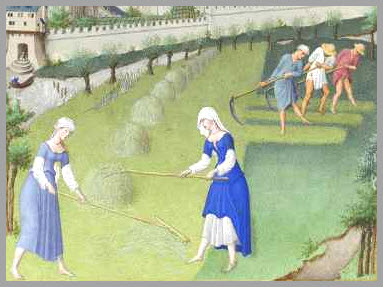
The Church taught girls to be meek and obedient to their fathers, and later in life, their husbands.[ix] This was how the Virgin Mary was perceived in the Bible.
Children, girls and boys, grew up fast in the Middle Ages. French historian Philippe Aries argued that children were considered ‘little adults’.[x] The Church regarded a seven-year-old was an adult. This, they said, was the age of reason, when a child could commit sin.[xi] When they were big enough, most children were apprenticed in the trade of the family or if a peasant, worked in the fields. One common job for unmarried women was spinning—using hand-held spindles to make clothes. This is where the term ‘spinster’ originates. School wasn’t an option for many.

Canon law dictated the minimum age for marriage for a girl was twelve, and for boys, fourteen.[xii] This was different for nobles who made up their own rules. Most women during the Middle Ages living in rural areas married in their early twenties with age differences between husband and wife quite significant (men being older). For those women living in towns and cities, the average age of marriage was closer to the mid-twenty mark and the age gap narrower. These were considered the prime years for child-bearing, another thing encouraged by the Church.[xiii]
Women didn’t have to get married, though. There was another choice: join the Church as a nun. A thrilling option. But at nunneries, a woman could receive the best education available. This was not a route commonly taken and most women ended up getting married.
What Was Married Life Like For Women During The Middle Ages?
Let’s take a look at what life was like for married women during the Middle Ages.
Many factors pressurised women to marry, but two stand out. The first is the Church, for obvious reasons. The second boils down to extremely poor medical knowledge passed down by the third-century Greek surgeon, physician, and writer, Galen of Pergamon.
Galen said—and people believed this for well over a thousand years—that women’s wombs are cold and need constant warming by hot male sperm.[xiv] It was therefore believed that women had a physical need to have sex and marriage was an essential part of achieving that. Men thought women were gagging for it, and women thought their wombs would stop working. Fucked up or what?
When a woman married she gave up all of her property to her husband.[xv] How the marriage panned out was a matter of luck. What the very harsh-sounding laws tell us may not reflect the reality. Many husbands were devoted and loving, and in many surviving wills, husbands name their wives as executors.[xvi]
But as we mentioned before, a man could legally beat his wife. She did have legal recourse if he beat her too much, with a court forcing him to mend his ways.[xvii] Violent beatings were all too common, unfortunately. It became such a problem that in the fourteenth century, a saint named Wilgefortis emerged who was said to watch out for wives of abusive husbands.[xviii]
Depending on the job of their husband, most women worked and got paid, though less than men. Centuries on and we still can’t fix this. If living rurally they could find work planting, winnowing, weeding, and tending to animals like chickens and cows, as well as raising their children. If living in towns they often supported their husbands in their trades or worked in textiles. Women running alehouses was quite common too.
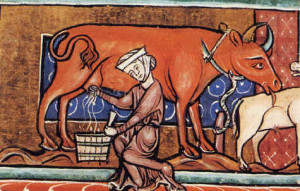
Divorce was not an option for women during the Middle Ages unless they could show they ought not to have married in the first place, which wasn’t straightforward.[xix] Another ground for separation was impotence, though it had to be proven. Reports exist of authorities testing the husband’s ability to get an erection by exposing him to other women.[xx]
It wasn’t uncommon for two married couples to live under the same roof. These married ‘units’ were often organised around brothers. Evidence of this comes from the court rolls dating back to the 1350s.[xxi]
For aristocratic women and those belonging to powerful and influential families, marriage served more as a business deal, creating alliances or increasing wealth.[xxii]
For many women, the chances of a marriage lasting a long time were not very high.
The Lives Of Widows During The Middle Ages
With men having to go off to fight in wars, women were left to run the household in their stead. Many died on the battlefield, so a lot of women found themselves as widows, even at young ages.
Higher-status women could inherit land off their deceased husbands and there’s evidence of those in towns inheriting their husbands’ businesses and trades after they died. Margaret Russell of Coventry, England, is a good example of a widow who became a very wealthy international trader.[xxiii]
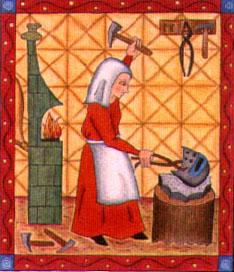
Widows were particularly prominent in town trade, mostly selling food, drink, and clothing. In some towns in the latter end of the Middle Ages, widows accounted for twenty percent of heads of households.[xxiv]
But it was not all good news for widowed women. Many fell into dire poverty and struggled to make ends meet for themselves and family. And being a widow meant that you were back on the market, so to speak. If a woman had inherited wealth from her deceased husband, it made her a target for seduction. To escape this, some women entered nunneries.[xxv]
More Guides On Medieval Life
Thanks for reading this guide on the lives of women during the Middle Ages. I’ve got a bunch of other guides that you may find useful too. Check them out below.
- The Life Of The Medieval Lord
- The Pesky Peasantry Of The Middle Ages
- An introduction to Medieval England from English Heritage
- A guide to medieval weapons
- Medieval armor
- A guide to medieval castles
- A complete guide to medieval cannons
- Siege warfare
References
[i] Pg.126, Life in the Middle Ages, M. Whittock, 2009.
[ii] Pg.127, Life in the Middle Ages, M. Whittock, 2009.
[iii] Pg.127, Life in the Middle Ages, M. Whittock, 2009.
[iv] Pg. 54, The Time Traveller’s Guide to Medieval England, I. Mortimer, 2008.
[v] Pg. 53, The Time Traveller’s Guide to Medieval England, I. Mortimer, 2008.
[vi] Pg.135, Life in the Middle Ages, M. Whittock, 2009.
[vii] Pg. 53, The Time Traveller’s Guide to Medieval England, I. Mortimer, 2008.
[viii] P.62, Piers the Ploughman, translated by J.F. Goodridge, 1966.
[ix] Pg. 22, Medieval Life, A. Langley, 1996.
[x] P.33, Centuries of Childhood: a Social History of Family Life, P. Aries, 1962.
[xi] [xi] Pg.139, Life in the Middle Ages, M. Whittock, 2009.
[xii] Pg.130, Life in the Middle Ages, M. Whittock, 2009.
[xiii] Pg.137, Life in the Middle Ages, M. Whittock, 2009.
[xiv] Pg. 54, The Time Traveller’s Guide to Medieval England, I. Mortimer, 2008.
[xv] Pg.134, Life in the Middle Ages, M. Whittock, 2009.
[xvi] Pg.136, Life in the Middle Ages, M. Whittock, 2009.
[xvii] P. 114, Medieval Women, H. Leyser, 1995.
[xviii] Pg. 58, The Time Traveller’s Guide to Medieval England, I. Mortimer, 2008.
[xix] Pg.131, Life in the Middle Ages, M. Whittock, 2009.
[xx] Pg.132, Life in the Middle Ages, M. Whittock, 2009.
[xxi] Pp. 3-44 ‘The Myth of the Immutable English Family’, Past and Present, Z. Razi, 1993.
[xxii] Pg.133, Life in the Middle Ages, M. Whittock, 2009.
[xxiii] Pg. 56, The Time Traveller’s Guide to Medieval England, I. Mortimer, 2008.
[xxiv] Pg.136, Life in the Middle Ages, M. Whittock, 2009.
[xxv] Pg.137, Life in the Middle Ages, M. Whittock, 2009.
Thanks for reading this guide on the lives of women during the Middle Ages.
- 5 Tips to Help Your Child Learn and Succeed at Primary School - February 26, 2024
- The Advantages Of Using An AI Essay Typer Alternative - February 14, 2024
- Advice On Getting Help With Your Homework - January 26, 2024

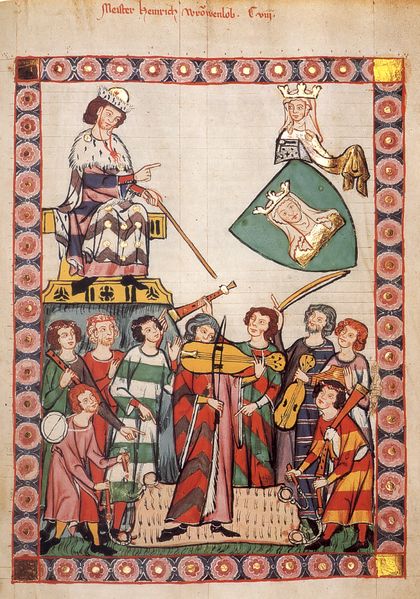
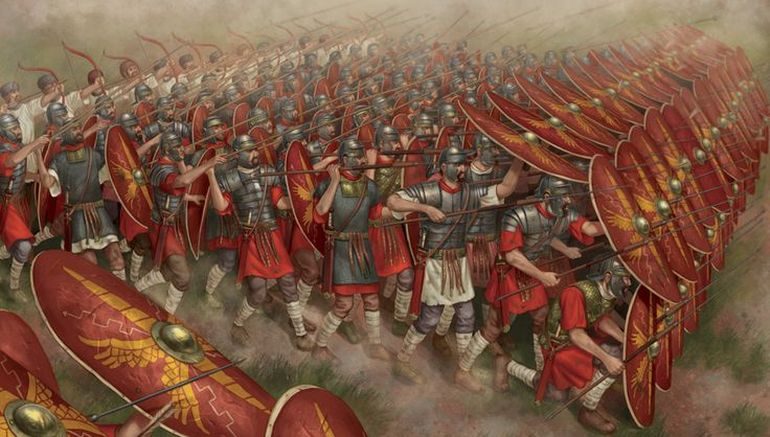

Interesting post and yeah, the middle ages weren’t called the dark ages for no reason.
Very dark indeed!
In some German towns they have museums on medieval torture, really horrible.
A very broad approach to a highly complex topic which isn’t the same in every geographic. Divorce laws were different everywhere you went. Cutting the woman down to three classes helps to make the situation understandable for some though you forgot to mention ladies, queens, hearth-mates, baronesses, etc. In many cases women became rich merchants, widows took over their goodman’s trade and misconceptions are still rampant to this day. Thanks for the read!
It is a very complex topic indeed! I decided to focus on medieval England as you can probably guess. If I were to factor in the whole of Europe it would have turned out a bit of a tome. Thanks for reading and commenting!
I look forward to your next post!
An interesting look back through the history of women under patriarchy, and, as you end with, many of the same problems are still faced by women today. In the fantasy I write, I look to highlight the reality of the female characters in their societies. It doesn’t always feel like the most proactive way to bring about change, but it also doesn’t afford the reader to deny the forms of oppression. I look forward to reading more of your blog posts.
I’m of exactly the same view! Writing about these problems doesn’t seem proactive but it’s a different means of raising the issues in people’s minds. Thanks a million for reading and commenting!
Pingback: Religion in Fantasy – Richie Billing
My story has a female protagonist, but she suffers from both sexual and racial prejudice (more so the latter).
Life for women has been terrible these past few millennia. Humanity needs to wake up and fix itself.
Not half. It all seemed to go downhill around this point. The rise of the church makes for an interesting correlation
Pingback: Religion in Fantasy - Richie Billing